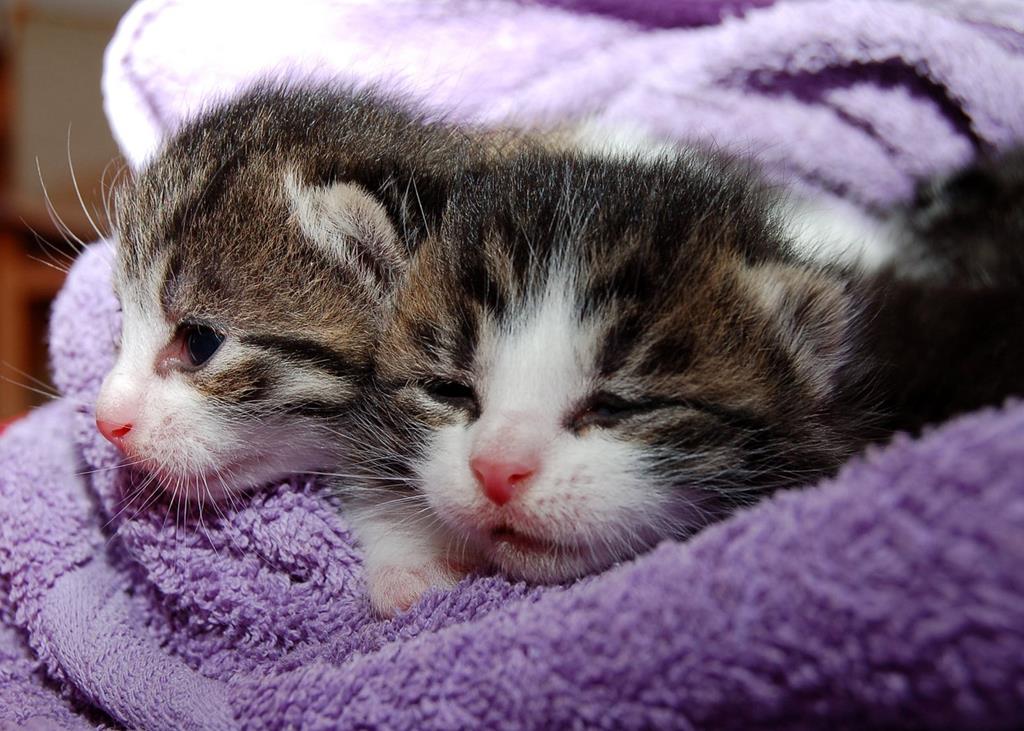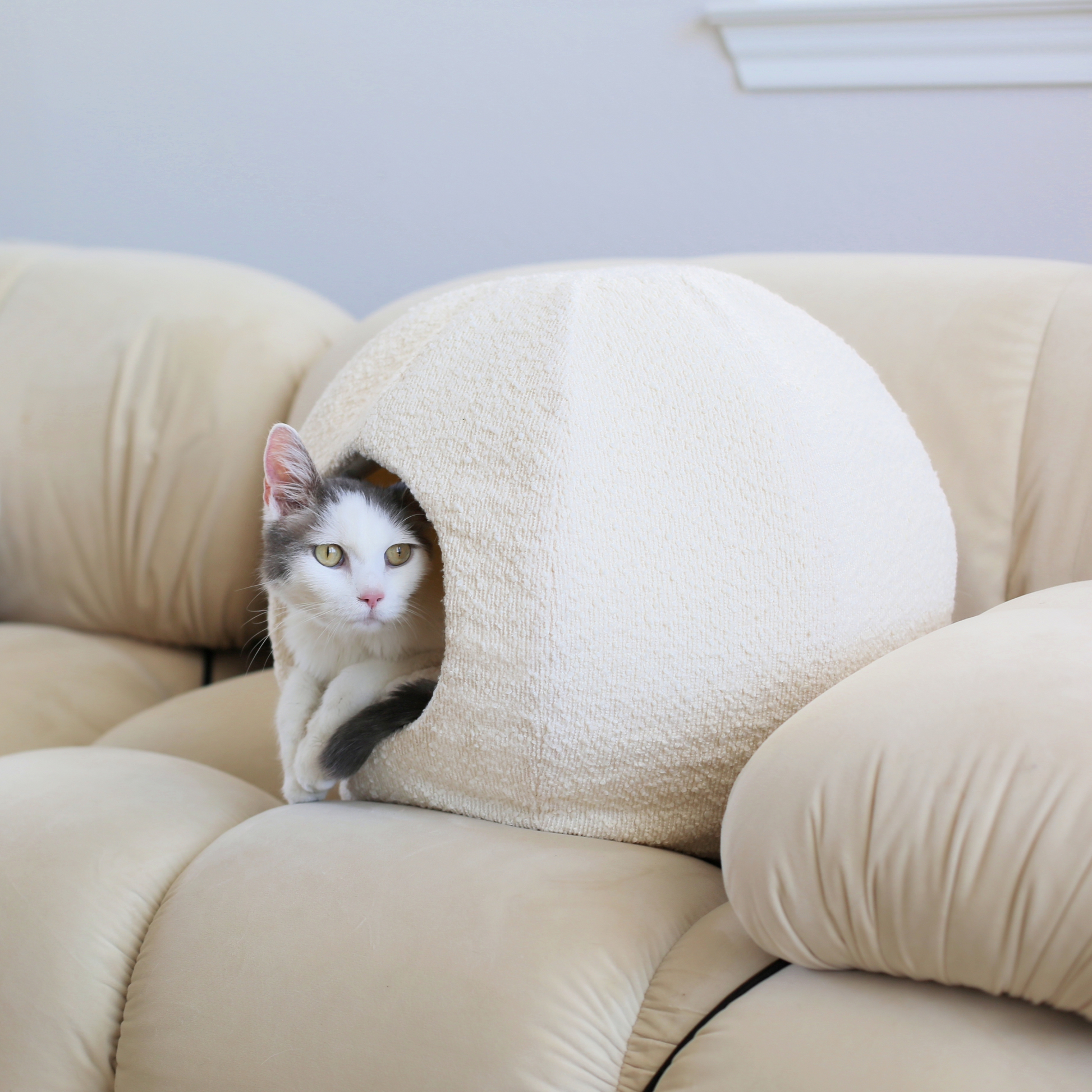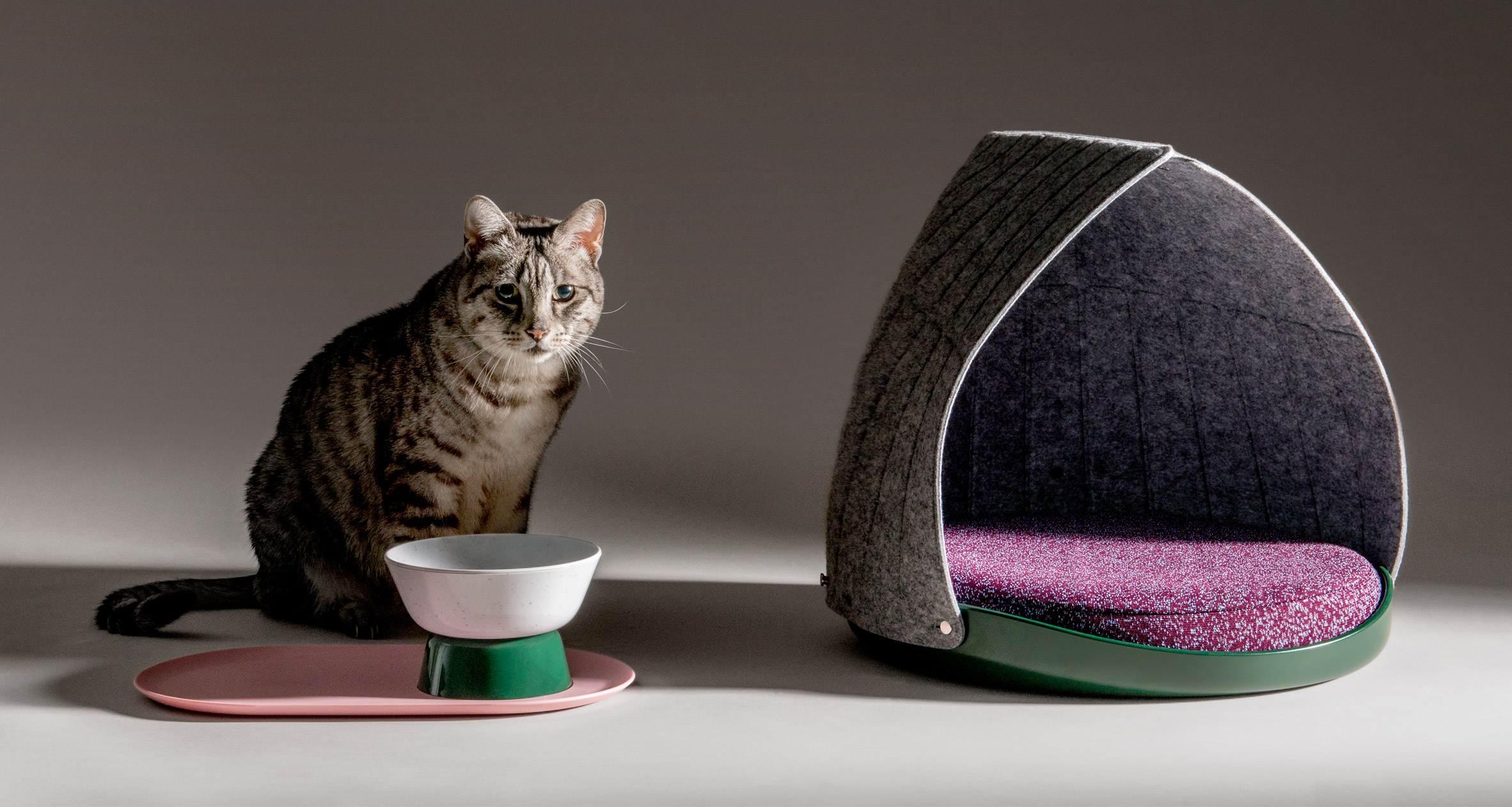Clean your cat’s bed every two weeks or sooner if it is visibly soiled. Regular cleaning minimizes pet odors and maintains a hygienic sleeping space.
Cat beds should be kept as clean as the rest of your home. Cats are meticulous animals by nature, valuing cleanliness in their sleeping quarters. Sleeping in a fresh bed reduces their exposure to dirt, oils, and potential allergens, supporting their overall well-being.
It’s important for pet owners to establish a routine that ensures the bedding is free from hair, dander, and dust. This simple step in pet care not only benefits your furry friend but also contributes to a clean and inviting home environment. Always use cat-friendly detergents to preserve the bed’s material and avoid any skin irritations for your cat. Regular maintenance of your cat’s bed also helps to extend its life, keeping it comfy and supportive for your feline companion’s daily catnaps.
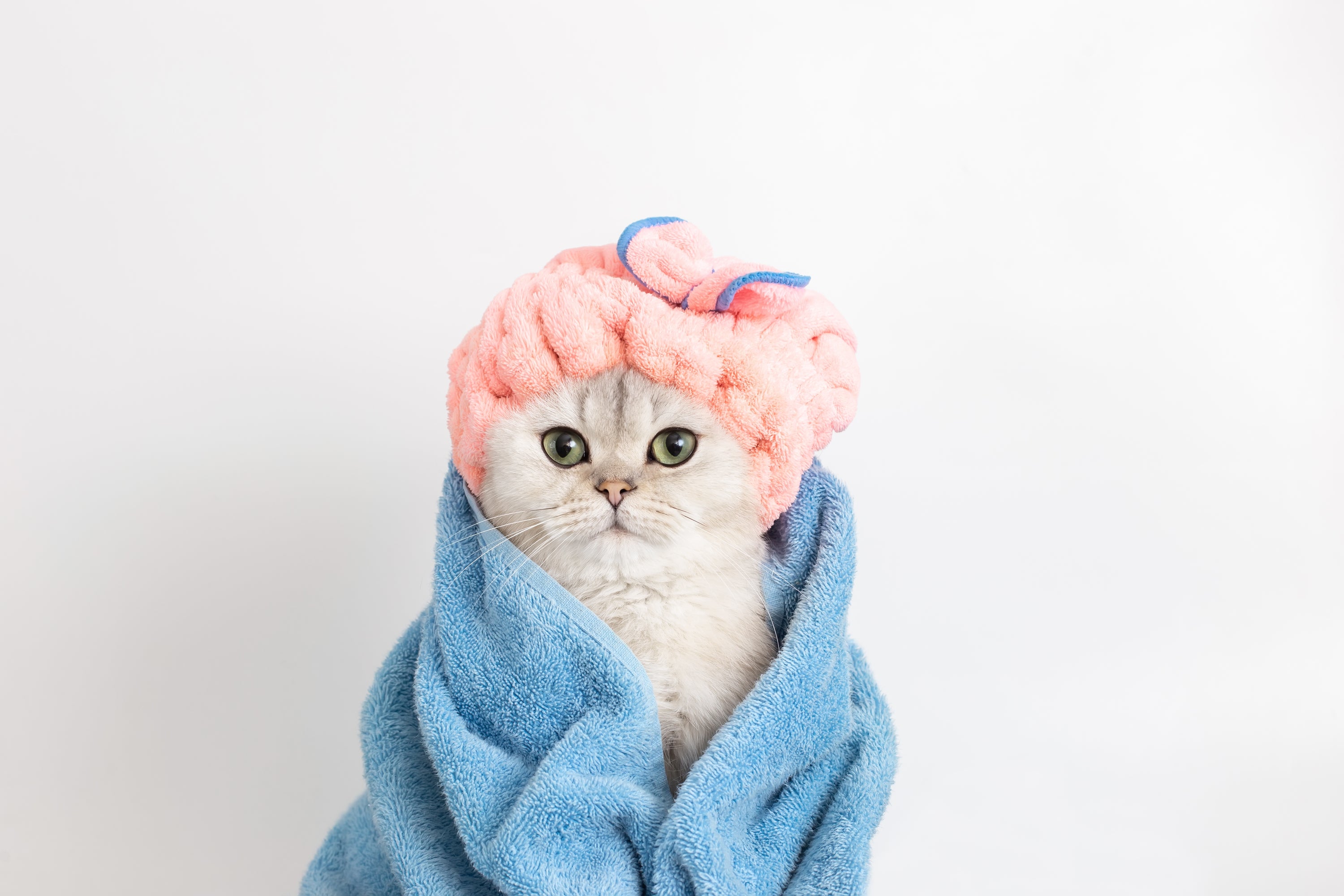
Credit: petterm.com
Recognizing The Need For Cleanliness
Maintaining a clean environment is crucial for the well-being of our feline friends. Cats are meticulous creatures who prioritize cleanliness, making the state of their bedding equally important. Regular cleaning not only ensures a hygienic rest area but also promotes a healthy life for your pet. Keeping tabs on the condition of your cat’s bed is a vital aspect of pet care.
Cats’ Grooming Habits
Cats spend a significant part of their day grooming to maintain their fur’s cleanliness. This instinctive routine reduces their stress and keeps them comfortable. Despite their self-cleaning nature, the places where they rest can still accumulate fur, dirt, and oils. This necessitates periodic cleaning of their bedding to match their high grooming standards.
Health Implications Of Unclean Bedding
Unclean cat beds can harbor bacteria and parasites, leading to health issues for both pets and owners. Dirty bedding increases the risk of infections and allergies. To prevent health complications, it is essential to keep your cat’s sleeping area clean and free from harmful contaminants.
Here’s why and how often to clean your cat’s bed:
- Dander Build-up: Cat skin flakes can cause allergies.
- Fur Accumulation: Cleaning removes excess fur, reducing hairballs.
- Odor Management: Regular washing keeps the bed smelling fresh.
- Infection Prevention: Clean bedding prevents disease spread.
| Type of Cleaning | Frequency |
|---|---|
| Spot Cleaning | As needed |
| Bedcover Wash | Weekly |
| Deep Clean | Monthly |
Remember, a clean bed is a cornerstone for a healthy, happy cat. Match their grooming habits with a regular cleaning routine to provide a safe and comfortable resting space.

Credit: kb.rspca.org.au
Decoding The Cleaning Timeline
Understanding the perfect schedule for cleaning your cat’s bed is crucial. Keeping your furry friend’s resting place fresh and hygienic is a must for their health and your home’s cleanliness. Let’s decode the optimal cleaning timeline.
Factors Affecting Cleaning Frequency
A handful of elements play vital roles in determining when to wash that cozy cat bed. Let’s explore these factors:
- Cat’s shedding level: More shedding equals more frequent cleaning.
- Indoor cleanliness: Dusty homes may require extra bed washes.
- Outdoor activities: Outdoor kitties bring in more dirt.
- Health considerations: Sick or older cats need a cleaner environment.
- Bed location: High traffic areas gather dirt quickly.
The Baseline Recommendation
A general rule for all pet owners is simple. Aim to clean your cat’s bed every one to two weeks. This keeps comfort high and allergens low. Check out this straightforward plan:
- Vacuum weekly: Grab loose fur and dust.
- Spot clean: Address spills and stains immediately.
- Full wash bi-weekly: Toss the bed in the laundry.
Remember, this recommendation can adapt to those factors we mentioned earlier. For example, a shedding season might require more full washes. Always keep your cat’s habits in mind.
Selecting The Right Cleaning Supplies
Caring for your cat’s bed is about more than just tidiness; it’s essential for their health. Regular cleaning keeps the bed free of fleas, dirt, and allergens. In this section, learn about the best cleaning supplies that are safe and effective for your cat’s comfort zone. Ready to dive in?
Before we begin, it’s crucial to choose non-toxic options. Cats have sensitive noses and skin, so the right products can make a big difference. Let’s explore the safe detergents and tools that will simplify your cleaning routine.
Safe Detergents For Cats
Selecting a detergent should be done with your cat’s safety in mind. Here’s a list of options that are both safe and effective:
- Free and clear detergents: Look for brands labeled ‘free of dyes and perfumes’.
- Baking soda and vinegar: A natural combo that deodorizes and cleans.
- Enzyme cleaners: Break down stains and odors without harsh chemicals.
Tools To Ease The Cleaning Process
A proper set of tools can make cleaning your cat’s bed a breeze. Use these to keep the bed fresh and inviting:
- Vacuum with upholstery attachment: Removes hair and dander with ease.
- Scrub brush or sponge: Helps work out tough spots in the fabric.
- Washing machine: Use one that can handle pet bedding for a deep clean.
Remember to always check the cat bed’s care label before starting. Some may require hand washing or specific temperatures. With the right supplies and a gentle touch, your cat’s bed will be clean, cozy, and safe.
Step-by-step Cleaning Guide
A Step-by-Step Cleaning Guide is essential for maintaining your furry friend’s bed. Cats are meticulous creatures, and a clean bed is vital for their comfort and health. Regular cleaning removes allergens and prevents pesky fleas. Follow these steps for a fresh, hygienic cat bed.
Removing Hair and DebrisRemoving Hair And Debris
Start by stripping the bed of any loose fur and dirt. Consider wearing rubber gloves to easily gather hair. Use a lint roller for finer strands. Vacuum the bed’s surface with an upholstery attachment to extract ingrained debris.
Table for Tools| Tool | Use |
|---|---|
| Rubber Gloves | Gather hair |
| Lint Roller | Remove fine hair |
| Vacuum with Upholstery Attachment | Extract debris |
Washing And Drying Techniques
Check the care label before washing. If it’s machine washable, use a mild, unscented detergent. Secure zippers and fasteners. For beds without removable covers, use a large pillowcase as a laundry bag.
Bullet Points for Washing- Set washing machine to gentle cycle.
- Use warm water for effective cleaning.
- Add an extra rinse cycle to remove detergent residue.
Drying the bed thoroughly is critical. Moisture breeds bacteria and mold. Air dry the bed in sunlight when possible. If using a dryer,
Ordered List for Drying Steps- Choose low heat or air-dry setting.
- Place a few clean, dry towels to prevent clumping.
- Check periodically and fluff to maintain shape.
Maintaining Bed Cleanliness
Maintaining the cleanliness of your cat’s bed is crucial for your pet’s health and your home’s hygiene. A clean bed ensures a comfortable and safe environment for your feline friend.
Preventive Measures
Taking proactive steps can significantly reduce how often you need to clean the bed. Implement these tips:
- Choose a bed with washable materials. Beds with removable covers make cleaning easier.
- Spot clean regularly. Address spills or dirt immediately to prevent stains.
- Use a waterproof liner. It will protect the bed from accidents.
- Wipe your cat’s paws. Do this before they enter the bed if they’ve been outdoors.
- Keep the bed in a clean area. Less exposure to dirt keeps the bed cleaner.
Behavioral Training For Your Cat
Training your cat can help maintain bed cleanliness. Try these strategies:
- Establish a routine grooming habit to reduce shedding on the bed.
- Invest time in litter box training to prevent accidents.
- Encourage your cat to use scratching posts to reduce the transfer of oils and dirt.
When To Replace A Cat Bed
Caring for your feline friend includes maintaining their cozy sleep haven. While cleaning a cat bed is crucial for hygiene, knowing when to replace a cat bed is equally important. Over time, cat beds can become worn out and less comfortable. This can affect your cat’s health and well-being. Here’s how to tell when it’s time for an upgrade.
Signs Of Wear And Tear
Regular inspection of your cat’s bed can reveal its condition. Look for these warning signs:
- Fading or fraying fabric: Indicates the material is weakening.
- Loose threads or seams: Pose a potential hazard if ingested.
- Stains and odors: Can harbor bacteria and deter your cat from using the bed.
- Loss of cushioning: Reduces your cat’s comfort and support.
- Changed shape: Suggests the bed no longer provides proper support.
Upgrading Your Cat’s Bed
When the old bed is past repair, consider these upgrade tips:
- Measure your cat: Ensure the new bed fits your cat’s size.
- Select quality materials: Durable fabrics last longer and provide better comfort.
- Consider washability: A removable, machine-washable cover makes maintenance easy.
- Look for non-skid bottoms: Keep the bed in place for your cat’s safety.
- Reflect on your cat’s habits: Opt for a bed that suits their preferred sleeping style.
Remember, providing your cat with a clean, comfortable, and safe resting place ensures their happiness and health.
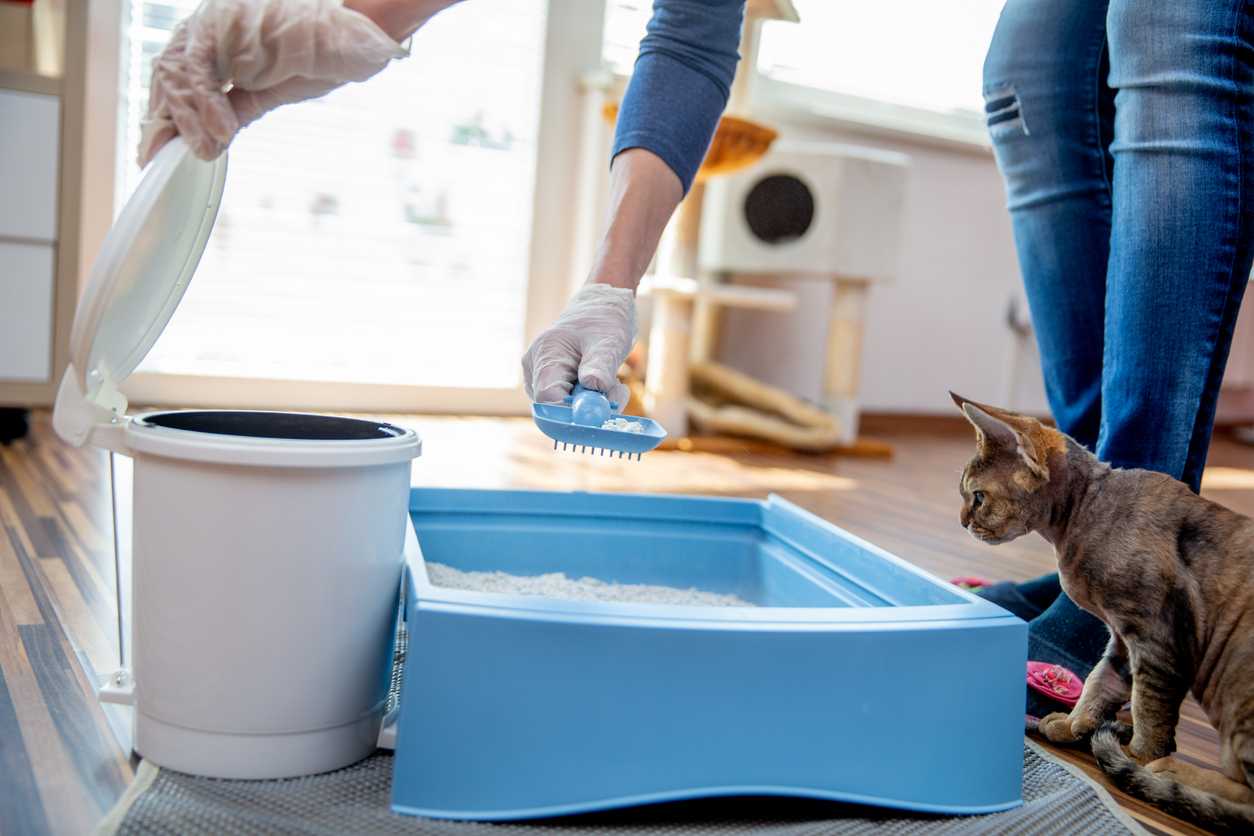
Credit: time.com
Frequently Asked Questions For How Often Should You Clean Cat Bed?
How Often To Wash A Cat Bed?
Ideally, a cat bed should be washed every two weeks. However, if your cat is a heavy shedder or has allergies, consider washing it weekly. Use a mild, pet-safe detergent and ensure the bed is completely dry before letting your cat use it again.
Can Cat Beds Be Machine Washed?
Many cat beds are machine washable, but always check the care label first. If it’s machine safe, wash it on a gentle cycle with pet-friendly detergent. Air dry or tumble dry on low heat, following the manufacturer’s instructions.
What’s The Best Way To Clean A Cat Bed?
The best way to clean a cat bed is to remove hair with a vacuum or lint roller, pre-treat stains, and then wash according to the care label. Use a pet-safe detergent and dry thoroughly to prevent mold or mildew.
Why Should You Clean Your Cat’s Bed?
Cleaning your cat’s bed keeps it free from fleas, germs, and allergens. Regular cleaning can prevent skin infections and respiratory issues in cats. It also ensures a pleasant and odor-free environment in your home.
Conclusion
Regular cat bed cleaning is essential for your feline friend’s health and happiness. Aim for a wash cycle every two weeks or more often, depending on activity. Remember, a fresh bed equals a content and comfy kitty. Keep up with bed hygiene and enjoy the purrs of approval.

